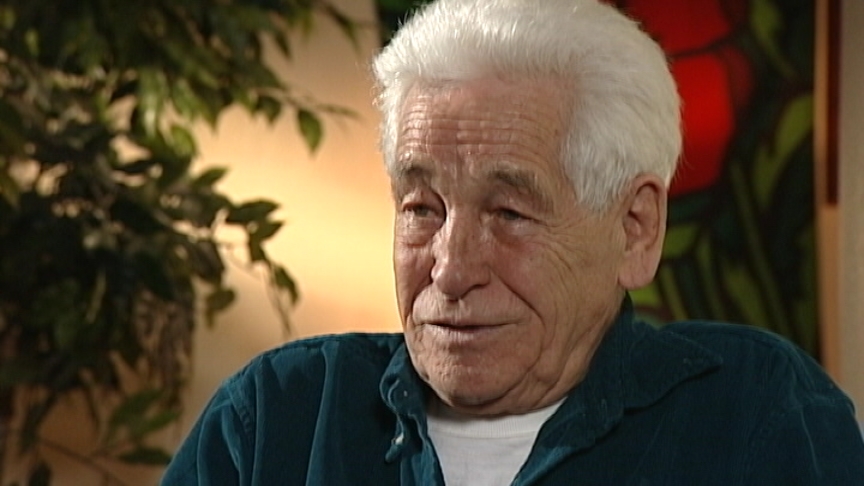The Importance of Good Sea Legs
Heroes Remember
The Importance of Good Sea Legs
Transcript
At sea, the motion of the ship has to be counteracted with the
lantern, that's a big part of it. If you have the lantern
sitting on a pedestal and you don't move it up and down to
compensate for the roll of the ship the, the light will be
invisible at the other end, or difficult to see.
Interviewer: So that would have been quite an art to make sure
that you kept your light aimed.
Oh, we all developed pretty good sea legs, you know, especially
on a corvette. I remember on the binnacle of a ship, there's
what they call an inclinometer, it's a needle that hangs
vertical and the ship rolls around it, and on the Rivière du
Loup the corvette I was on, this inclinometer is clocked up to
45 degrees, and it chipped paint on both sides in some of the
storms we were in. And I timed the roll of the ship one time, it
was 7 seconds from 45 degrees over here to 45 degrees over there
and we were doing cartwheels before and after the same time, it
was a lot of fun. I remember when I left the corvette, I went to
a frigate which was just about twice the size of a corvette and
every time the frigate would roll, I'd over compensate and bash
my head on the wrong side. I was still bouncing in the corvette,
it took a long time to get used to the slower motion. The convoy
is in a rectangular shape and the corvettes are stationed on the
outside of it, and say you're up on the starboard bound of the
convoy and you have an echo over there, you would chase it and
try to figure out whether it was a submarine, or a school of
fish, or whatever it was. Even thermal changes would give an
echo sometimes. And, if it persisted and you thought for sure it
was a submarine, then you started up charging
the thing right away.
Description
Mr. Roberge describes his experiences dealing with the rolling of the sea on a frigate and corvette.
Barney Roberge
Mr. Roberge was born in 1923, in Calgary, Alberta. He moved to Vancouver where he lived with his father until 1930. He then moved to Banff, Alberta, to live with his mother and step dad. He joined the navy as soon as war was declared. He wanted to join to see the world and to do his part in protecting the country. He talks about what it was like to be in the navy during the War.
Meta Data
- Medium:
- Video
- Owner:
- Veterans Affairs Canada
- Duration:
- 02:10
- Person Interviewed:
- Barney Roberge
- Battle/Campaign:
- Battle of the Atlantic
- Branch:
- Navy
- Units/Ship:
- Royal Canadian Navy
- Rank:
- Boy Seaman 1st Class Chief
- Occupation:
- Communication (Visual)
Related Videos
- Date modified:





